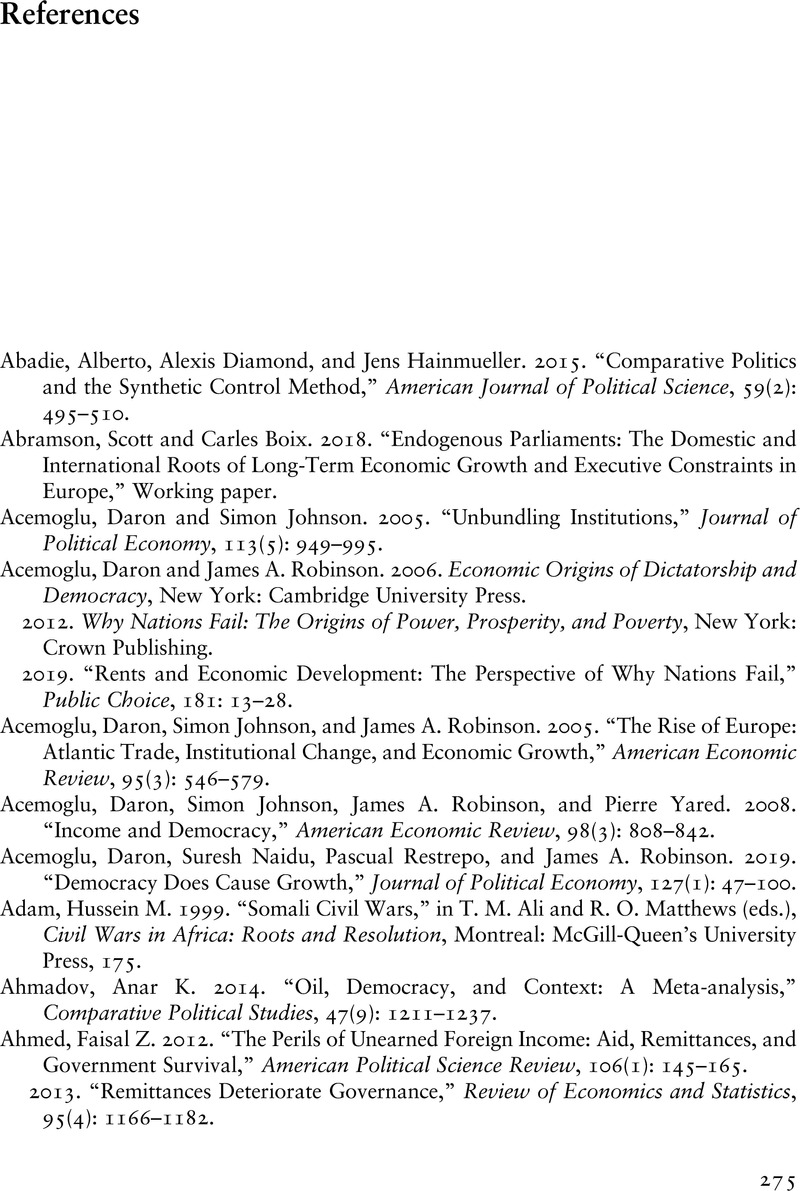Book contents
- Conquests and Rents
- Political Economy of Institutions and Decisions
- Conquests and Rents
- Copyright page
- Dedication
- Contents
- Figures
- Tables
- Acknowledgments
- Part I A Political Economy Approach
- Part II The Institutional Legacy of Muslim Conquest
- Part III The Impact of Contemporary Rents on Dictatorship and Violence
- Part IV Conclusion
- References
- Index
- References
References
Published online by Cambridge University Press: 01 June 2023
- Conquests and Rents
- Political Economy of Institutions and Decisions
- Conquests and Rents
- Copyright page
- Dedication
- Contents
- Figures
- Tables
- Acknowledgments
- Part I A Political Economy Approach
- Part II The Institutional Legacy of Muslim Conquest
- Part III The Impact of Contemporary Rents on Dictatorship and Violence
- Part IV Conclusion
- References
- Index
- References
Summary

Information
- Type
- Chapter
- Information
- Conquests and RentsA Political Economy of Dictatorship and Violence in Muslim Societies, pp. 275 - 290Publisher: Cambridge University PressPrint publication year: 2023
